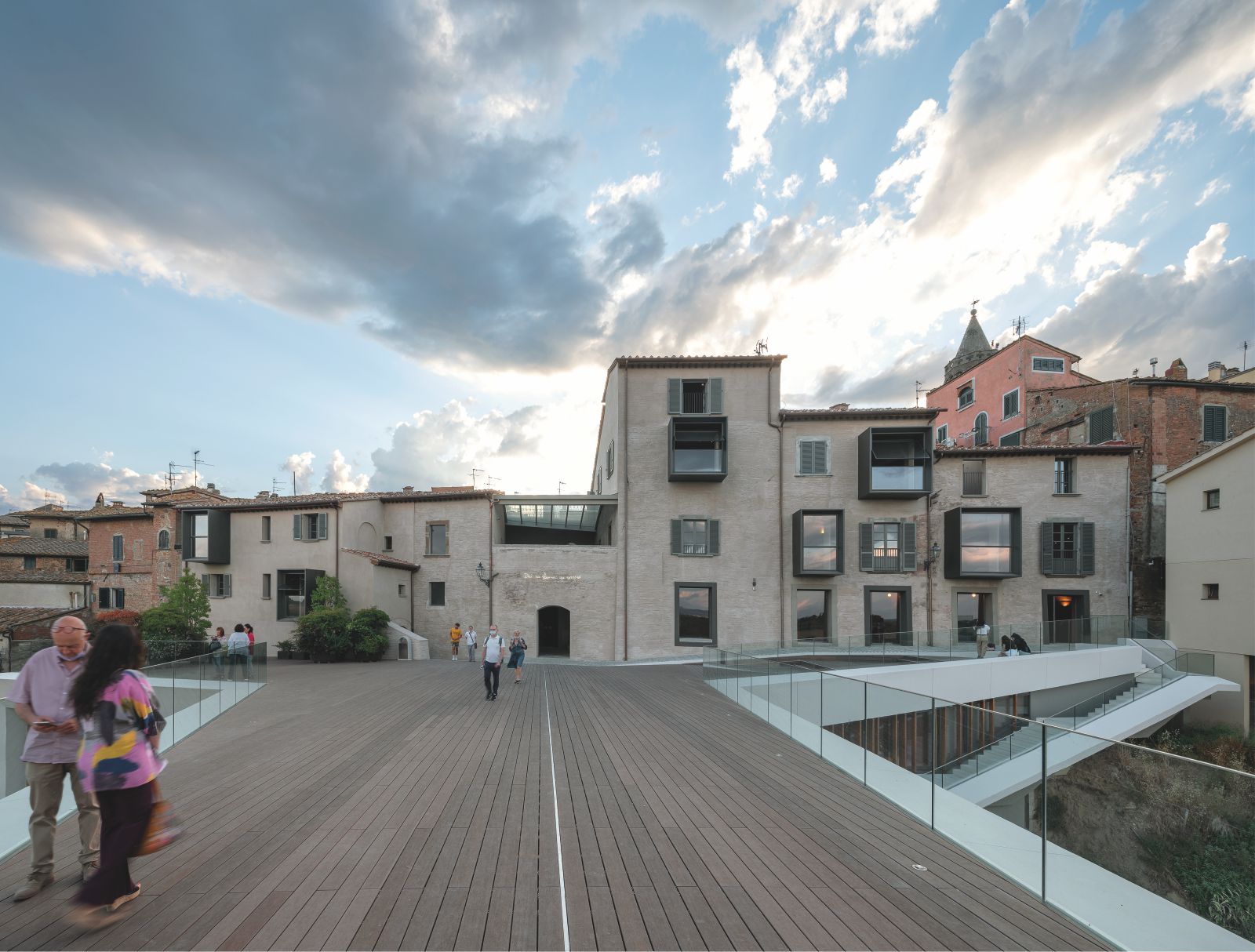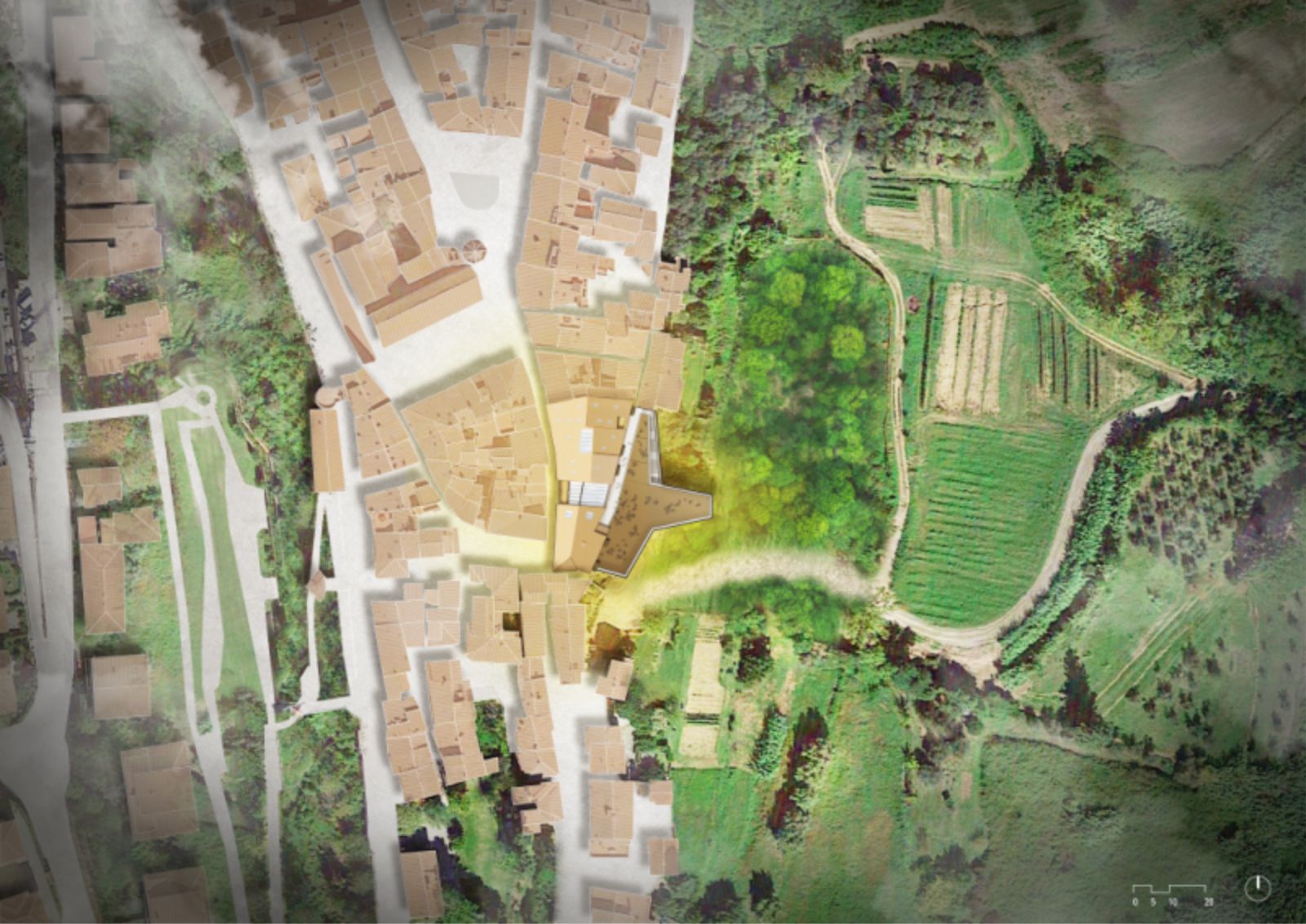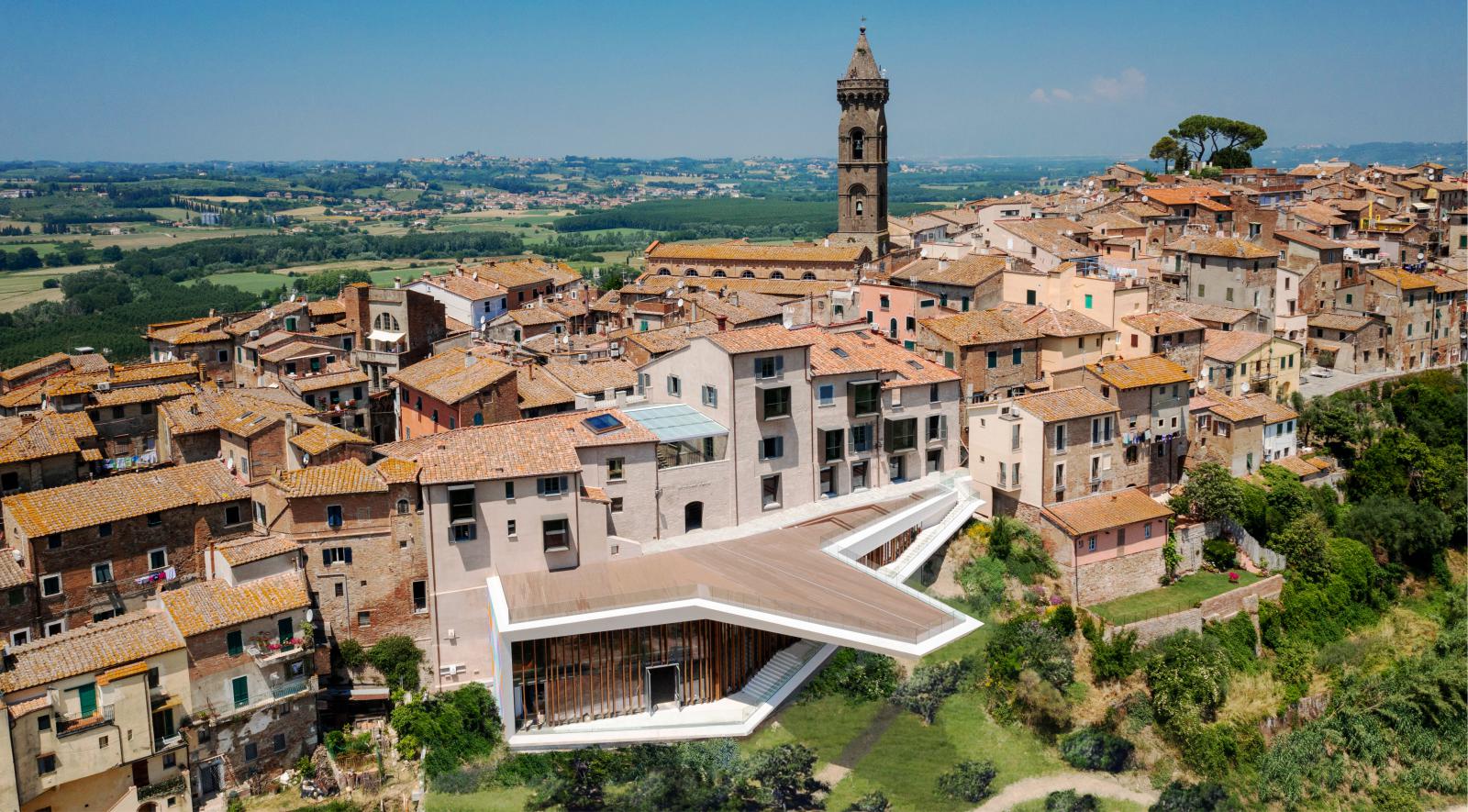Communities and their public places
Palazzo Senza Tempo in the historic centre of Peccioli is a response to the municipal administration’s desire to encourage new cultural programmes and commercial activity while enhancing the built heritage of this Medieval Tuscan hill town.
Widespread views
Centred on a piazza overlooked by the Pisan Romanesque church of San Verano, Peccioli – set high above vineyards and olive groves – commands widespread views of the unspoiled Era Valley. A public building, Palazzo Senza Tempo comprises a range of renovated and re-purposed town houses dating from as early as the 14th Century set along Peccioli’s via Carraira.

Facing east from the very edge of the town, these enjoy direct views across the valley. The old houses are now internally and externally connected to a new two-storey building rising from via dei Bastioni below.
“Peccioli is a real laboratory. In the project, we wanted to carry on the idea that historical centres can give themselves a new life with contemporary elements, not living only in the past.
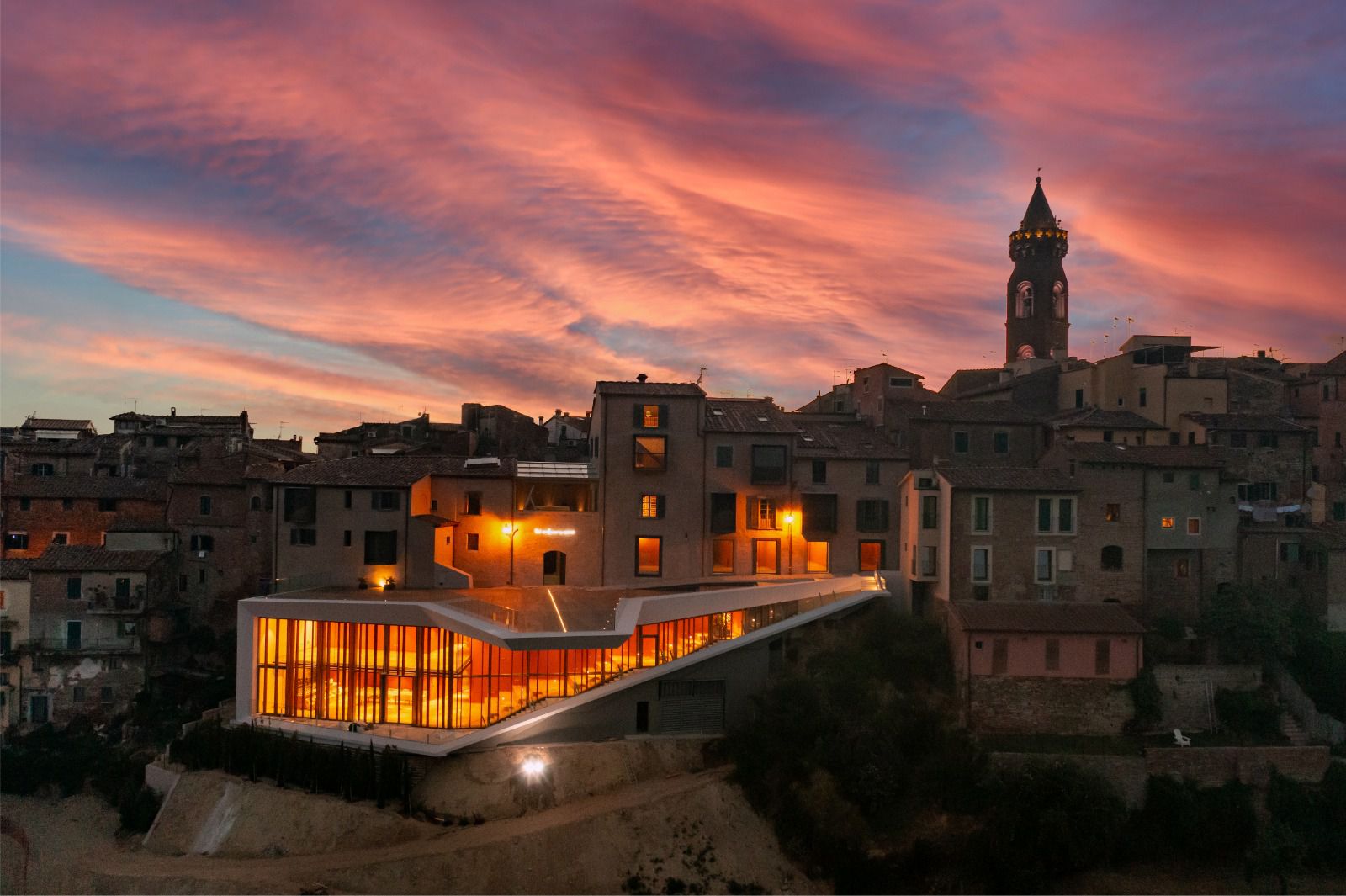
The intervention, conducted with courage and respect, makes the buildings part of the contemporary life of the area. This architecture, a bridge between past and future, is meant to be just a frame for this beautiful landscape, a landscape that looks like a painting from the 1500s,” says Mario Cucinella.
The terrace like a bridge
Spread over several levels, the old and new elements of the palazzo complex comprise: apartments, galleries for temporary and permanent exhibitions, study and co-working spaces, a multimedia library, a café and restaurant, public meeting rooms, and a spectacular cantilevered 600 m2 terrace, or piazza, projecting over the landscape beyond.

The project
The facades of the renovated buildings along via Carraira incorporate voids, skylights, and bay windows that, designed to add new points of view from the interior to the town, bring welcome daylight inside. A new glass roof placed over the passage of a historic courtyard completes the visual permeability of the spaces.
The renovated buildings along via Carraira form an interconnected whole interspersed by rooms with venerable wood-beamed ceilings and, unexpectedly, a dramatic open stone stair. In this way, the architect’s response to the building reflects the essential characteristics of the organic plan of Italian hill towns with their successions of tight, curving narrow alleys leading to wide and open civic spaces.

A walk through these towns is an adventure of visual surprise, as it is through the re-purposed spaces of Palazzo Senza Tempo.The surprise continues when, whether reached externally down a monumental public stair or internally, the palazzo reveals its new two-storey building. Glazed on three sides, this provides framed views of the landscape beyond tall windows.
Stepping up and down several levels, lined in wood and with a detailed level of craftsmanship, this is a contemporary building that pays full respect to the historic fabric and setting of Peccioli. It demonstrates how truly modern structures can be a natural part of Italian hill towns wishing to be far more than living museums.
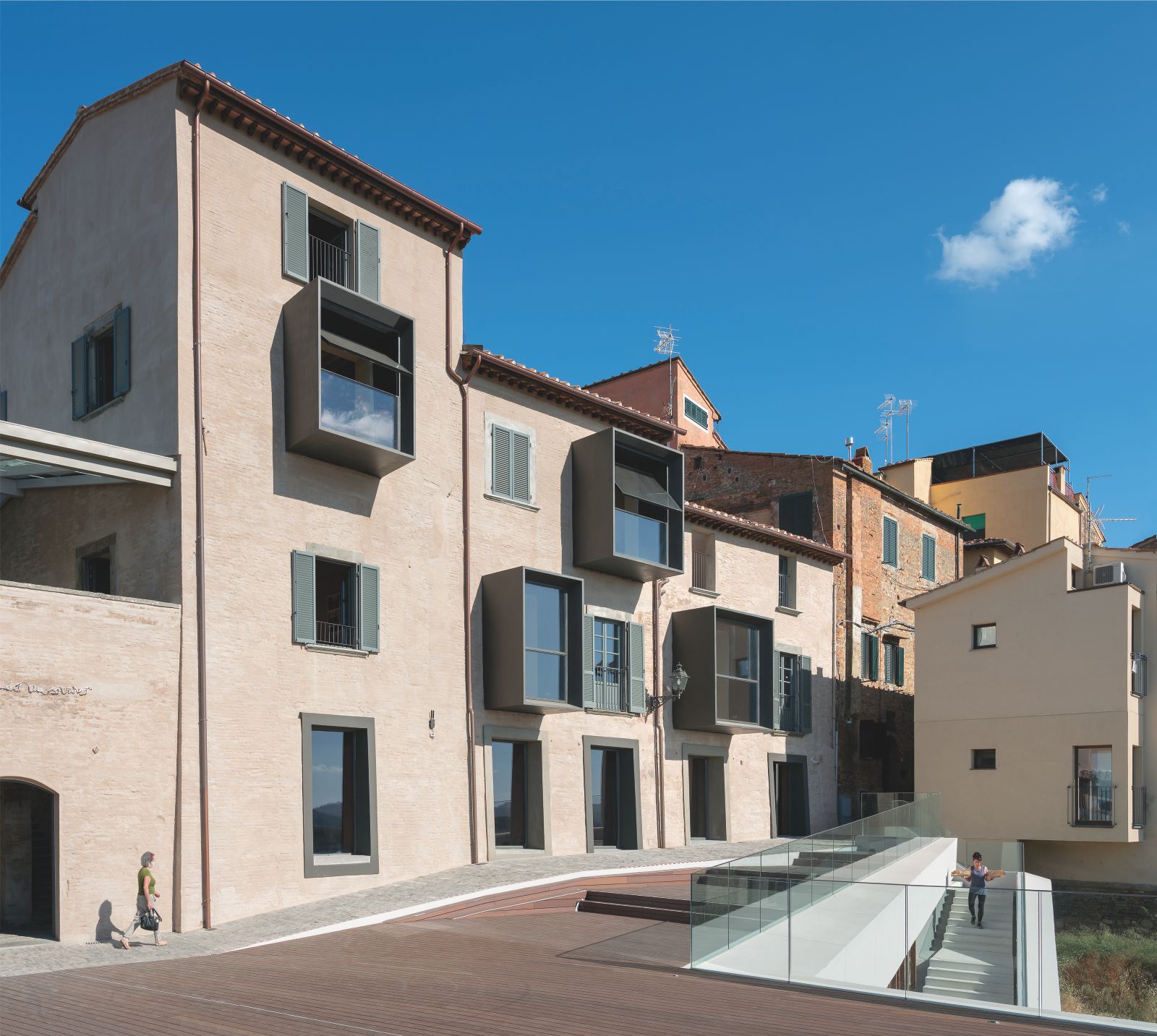
From Medieval to Contemporary
MCA’s design for Palazzo Senza Tempo demonstrates how new architecture in dialogue with the public life of a town and its historic fabric can create new life and activity.
It is exemplary of the potential for new vitality outside the big cities and how the adaptive reuse of historic buildings is a wholly viable part of this development. Palazzo Senza Tempo is a landmark project in demonstrating a bold yet befitting remodelling approach to Italy’s Medieval hill towns. Source by Mario Cucinella Architects.

- Location: Peccioli, Pisa, Italy
- Architect: Mario Cucinella Architects
- Design Director: Tommaso Bettini
- Project Director: Marco dell’Agli
- Project Team: Emanuele Dionigi, Biagio Amodio, Stefano Bastia, Paolo Greco, Alberto Menozzi, Marta Torsello, Augusta Zanzillo
- Model Maker: Yuri Costantini, Eugenio Armando De Nicola
- Visual Artist Coordinator: Alessia Monacelli
- Contractor: Cemes SpA, Bottai Group
- Structural Engineering: Ing. Augusto Bottai
- MEP Engineering: Ing. Luca Sani
- Works Director: Geom. Andrea Falchi
- Client: Belvedere Spa
- Area: 2,500 sqm
- Year: 2021
- Photographs: Duccio Malagamba, Andrea Testi, Courtesy of Mario Cucinella Architects
